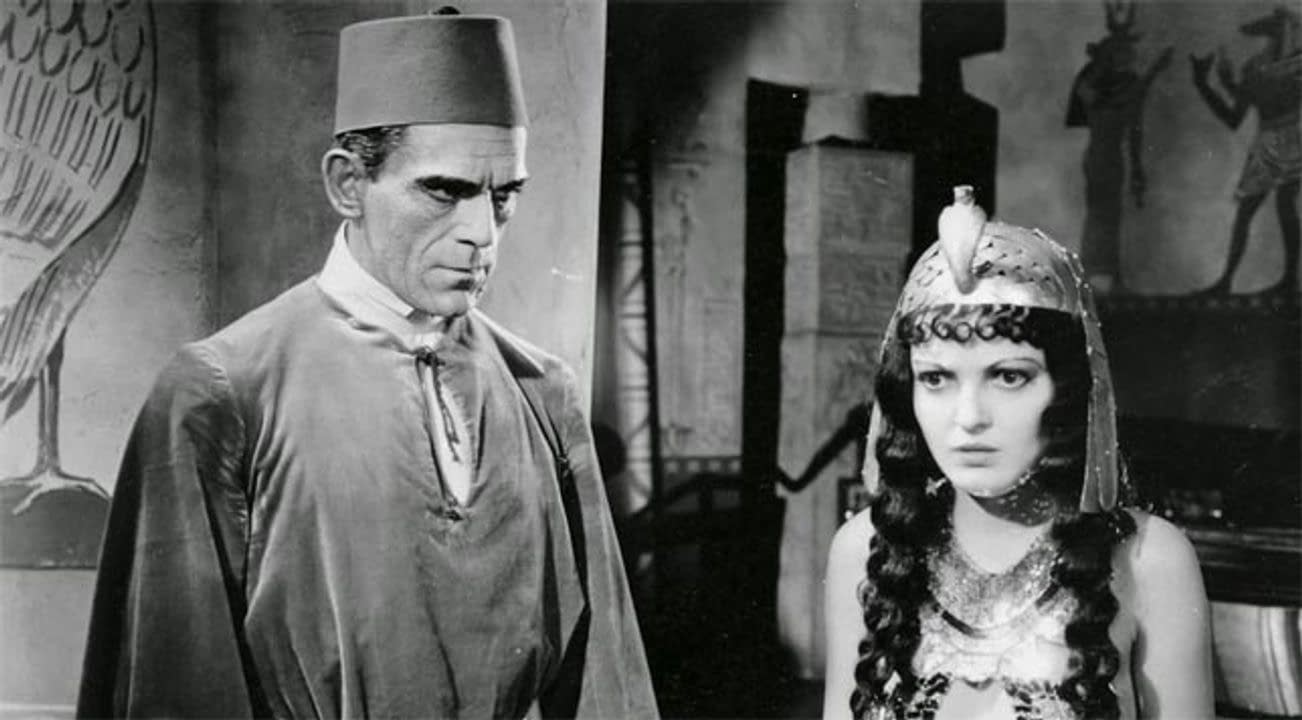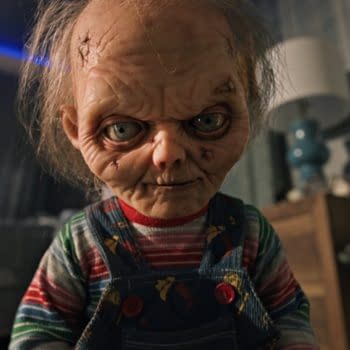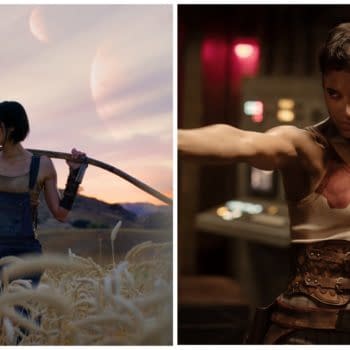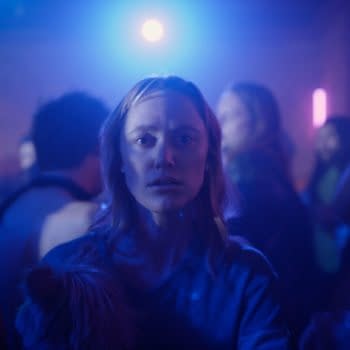Posted in: Movies, Universal | Tagged: Boris Karloff, Brenden Fraser, horror, horror movie, Howard Carter, John L. Balderston, Karl Freud, King Tuankamun, Lauren Looks Back, The Mummy, Universal Pictures, universal studios, Zita Johann
Lauren Looks Back: "The Mummy" (1932)
Universal Studios The Mummy needs no introduction. This pre-code horror film is typically grouped in with Universal's other classic horror movies, including Dracula, Frankenstein, and The Creature From the Black Lagoon. The plot is simple – in 1921 the tomb of Im-Ho-Tep is uncovered. It is revealed that Im-Ho-Tep was condemned and buried alive. Along with the tomb is the scroll of Toth, which a member of the expedition reads out-loud, thus bringing Im-Ho-Tep back to life. Ten years pass and Im-Ho-Tep has returned, disguised as a modern man Ardath Bey. Ardath Bay calls upon a new expedition crew to dig up the tomb of Princess Ankh-es-en-Amon. From there he attempts to resurrect the dead princess who has since been reincarnated. If you haven't seen this film, you're in for a treat. Boris Karloff is exceptionally creepy, but Zita Johann gives the best performance in the film. All that said, I won't be reviewing the film in a traditional manner. Countless people who know more than I have already done that. What interests me is how the world at the time shaped The Mummy.
The Mummy came out at a particularly interesting point in history. America was lush with Egyptomania. Even before Universal's The Mummy, cinema had been exploring Ancient Egypt. Between 1908 and 1918 there were five film versions of Cleopatra. Cinema was also not shying away from the undead either. Looking the unknown gave cinema an added boost — film could reshape time and stare death in the face, causing imaginations to flourish. There were already two The Mummy movies (1911, 1914) and countless other movies featuring a mummy as the subject matter. But it wasn't just the films themselves that were in love with Ancient Egypt. Movie theaters were inspired heavily by Ancient Egypt. In The Curse of the Pharaoh, or How Cinema Contracted Egyptomania (October vol 59 Lant, Antonia 1992, p. 90), the author draws some parallels between cinema and Ancient Egypt.
There was an association between the blackened enclosure of silent cinema and that of the Egyptian tomb, both in theoretical texts and the use of Egyptianate architectural style for auditoriums; a perception of cinema as a necropolis, its projections mysterious and cursed, issuing a warning to spectators; an understanding of cinema as a silent world that speaks through a pictorial language, as hieroglyphics revealed by light, and a consequent ennobling of the newest visual medium through alignment with some of the oldest word-images; a noted parallel between mummification for a life beyond life and the ghostliness of cinematic images,…a link between the chemistry of mummification and and that of film development and printing; an alliance between modern sexuality, particularly female screen sexuality, and myths surrounding the sphinx and its silent unreadability.
Then in 1922, Howard Carter discovered King Tutankamun's tomb, throwing popular culture in a drunken stupor with everything Ancient Egypt. Combined with the "Tutankamun's Curse" — in which 11 people associated with the excavation team all died within 10 years of the tomb being opened — people's imaginations into a frenzy. Screenwriter John L. Balderston (then a reporter) was actually present when Carter opened Tutankamun's sarcophagus for the first time in 1925. The Mummy examines those very ideas and historical events, and as we can see was very much so a product of it's time.
Many people also draw similarities between Dracula and The Mummy (director Karl Freund was the cinematographer for Dracula), but The Mummy is still influential in its own way. Unfortunately, subsequent Universal mummy films have nothing to do with the original movie. The Mummy did sort of receive an update with the 1999 film starring Brendan Fraser, but that's another article for another day. The 1932 version absolutely holds up to this day and is rightfully celebrated.













